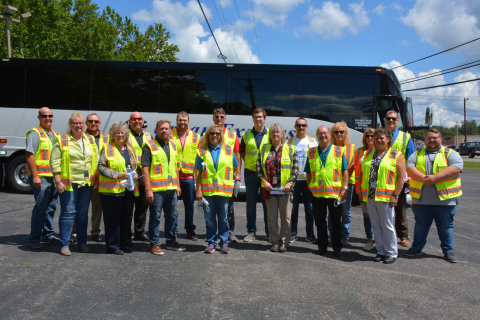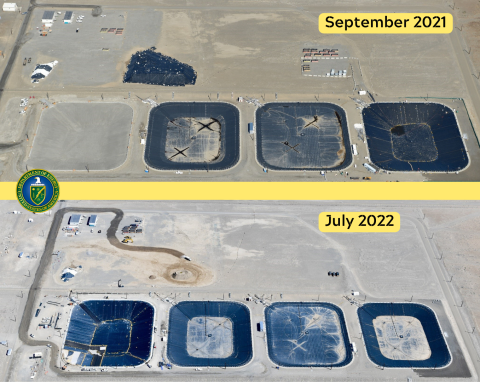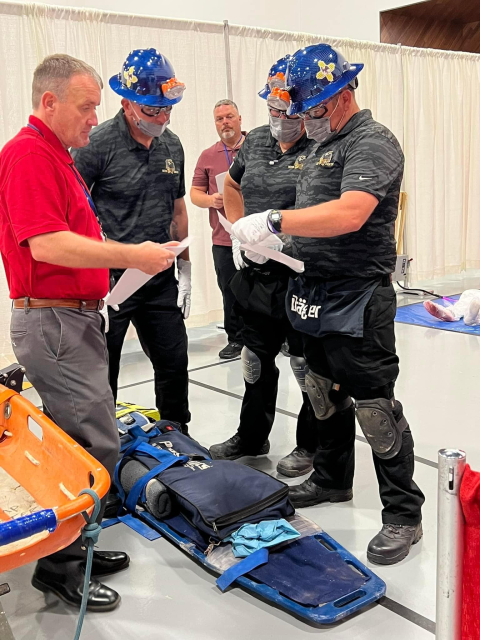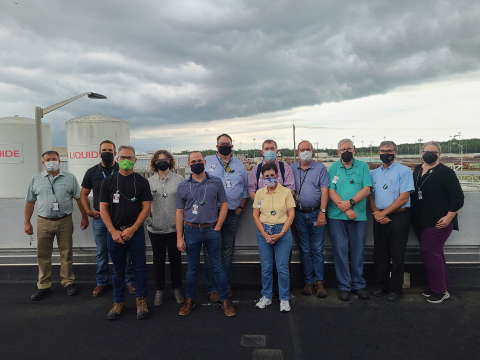
An intern supporting EM at the Idaho National Laboratory Site this summer touted his hands-on experience in the field as beneficial to understanding the dynamic nature of his intended profession.

Board members from the Pike County Chamber of Commerce recently visited EM’s Portsmouth Site for a tour and an update on decontamination and decommissioning (D&D) and other environmental cleanup efforts.

Workers are nearing completion of a fourth basin needed to ensure adequate storage for wastewater during tank waste treatment on the Hanford Site.

Mine rescue teams from EM’s Waste Isolation Pilot Plant (WIPP) finished in the top 15 in both the overall and field competitions at the first-ever joint Coal, Metal and Nonmetal National Mine Rescue Contest in Lexington, Kentucky.
The Savannah River Site (SRS) Solid Waste Management Facility (SWMF) recently improved the quality of the procedures used to carry out its missions with its Procedure Enhancement Program, leading to increased efficiency for the facility.

Members of the Paducah Site’s citizens advisory board (CAB) recently visited one of EM’s two plants that convert depleted uranium hexafluoride (DUF6) to more stable compounds.
In the era of the COVID-19 pandemic, the EM program at the Idaho National Laboratory (INL) Site recently filmed a virtual video tour of its facilities as an alternative to in-person visits.
Processes, systems and workers continue to come together as the Hanford Site draws closer to a monumental step in cleanup — treating and disposing of tank waste.
An association recently named the Waste Isolation Pilot Plant (WIPP) as a recipient of the 2022 Voluntary Protection Program (VPP) Outreach Award.
Blast. Dig. Hoist. Dump. Blast. Dig. Hoist. Dump.

